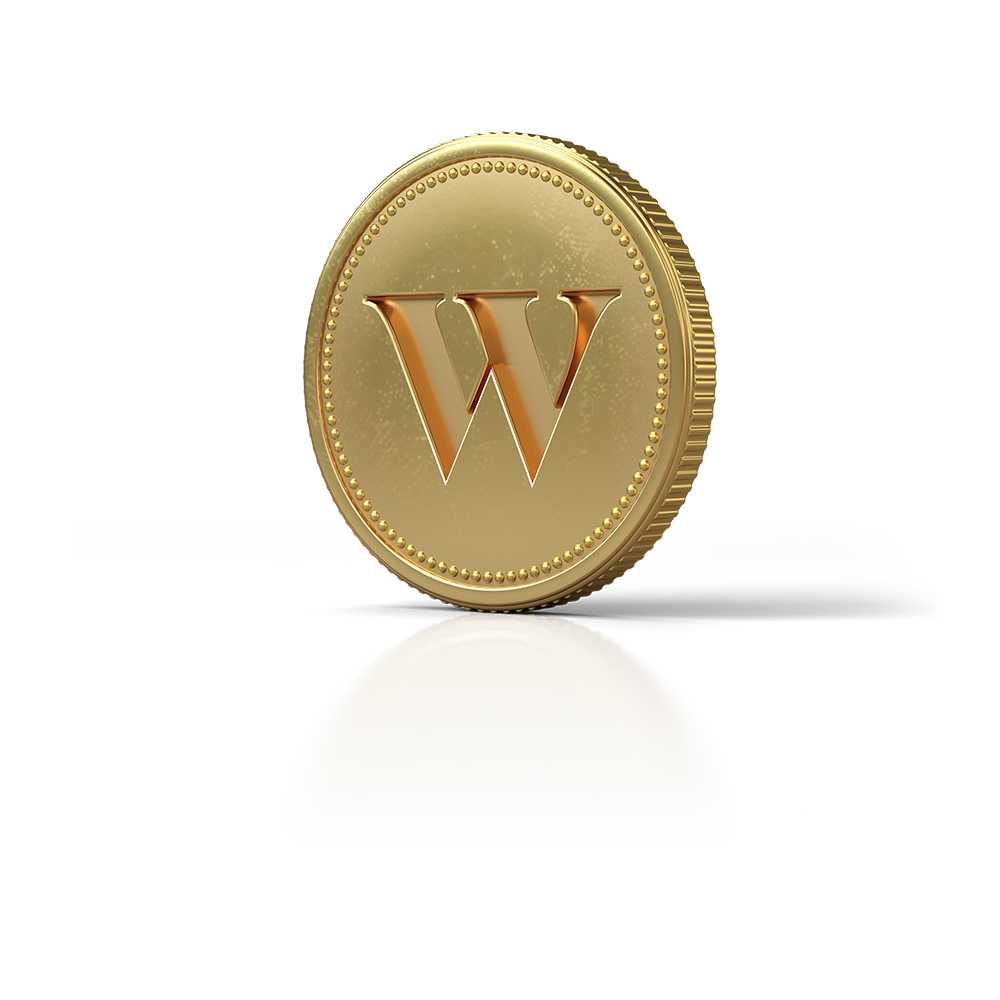Luisa Rollenhagen is a journalist and investor who writes about financial planning for Wealthsimple. She is a past winner of the David James Burrell Prize for journalistic achievement and her work has been published in GQ Magazine and BuzzFeed. Luisa earned her M.A. in Journalism at New York University and is now based in Berlin, Germany.
We've all heard of the Great Depression and the Great Recession. But what exactly happens when the market crashes?
What is a stock market crash
Your computer crashing? Bad. A car crash? Bad. Wedding Crashers? Overrated. You know what else is bad? The stock market crashing. No one likes that. And neither does the global economy.
Stock market crashes are associated with dramatic losses of money and periods of economic depression following the crash. But not all crashes are alike. In general terms, a stock market crash simply refers to a dramatic and sudden drop in stock prices across many different sections of a stock market. The sudden drop in prices can send investors panicking, which then exacerbates the problem even more.
You’ve heard of some bad stock market crashes. There’s of course the mother of all crashes, the Wall Street crash of 1929 which severely disrupted global finance and trade and kicked off the Great Depression. Then there’s the “dot-com crash” of 2002, when the tech boom of the 90s burst. And, of course, most recently there was the crash of 2008, when banks spectacularly crashed and caused a global economic meltdown — otherwise known as the Great Recession.
Keeping your money safe and secure is our number one priority. Take our risk-free survey today, and we'll build you an iron-clad portfolio personalized to suit your needs.
Why does the stock market crash?
Stock market crashes tend to be a combination of a couple of circumstantial factors and good old-fashioned human error. When major market indexes like the S&P 500, the Dow Jones Industrial Average, and the NASDAQ start falling dramatically, it triggers a panic among investors. Now, the reasons for those indexes falling in the first place are varied. It can be the result of a war, a geopolitical crisis, or—as is most commonly the case—the bursting of a market bubble.
A market bubble refers to an asset that, through hype and copycat behavior, has become so in-demand among investors that its price skyrockets beyond its actual worth. One of the earliest examples of a market bubble—and subsequent crash—was caused by tulips. “Tulip mania,” as the phenomenon became known, had 17th century Netherlands going nuts for the bulbous flowers. A single tulip bulb was worth more than the price of a house, and once the bubble burst, many people saw their life savings wiped out, with nothing to show for it but a few flowers.
Current market bubbles work the same way. As the total value of the market drops, investors panic and try to leave the market as quickly as possible by selling what they can. This reaches critical mass when investors start selling all at once, plummeting demand and causing stock market prices to fall even further, which then leads to panic selling. It’s a vicious feedback loop where dropping prices cause mass sales, which further drop prices, until all that’s left are massive losses.
Past stock market crashes
As mentioned before, there have been some pretty notorious stock market crashes in the past. They grip the public consciousness because their effects are often wide-reaching and long-lasting. The reason why an economic depression usually follows a crash is because there’s usually a huge reduction in investment, with investors burned and unwilling to put money back into the market in its current state. That, in turn, leads to low corporate earnings, which means job losses and less consumer activity, which in turn is bad for a country’s GDP. It’s called “depression” for a reason, after all.
The Crash of 2008
Most of us acutely remember 2008: it’s gone down in history as the worst economic recession since 1929. There are a number of culprits responsible for the 2008 crash, but a big one was the reckless lending of mortgages in America. Loans were enthusiastically shelled out to so-called “subprime” borrowers who weren’t able to pay back the loans. But the loans kept coming. Meanwhile, these mortgages would then be sold off to banks, who then converted them into supposedly low-risk securities by putting large numbers of them together in pools. The idea behind that was that housing markets in different American cities are independent enough from each other that the pool was diverse and therefore protected from major dips.
But as borrowers started defaulting on their mortgage payments, housing markets started to crumble. Meanwhile, the pooled mortgages had been used to pay for securities known as collateralized debt obligations (CDOs). Interest rates were low, and CDOs seemed to promise higher returns. But as the mortgages started defaulting, CDOs became worthless and were difficult to sell off again. Banks that had heavily invested in them suddenly found themselves strapped for cash. And that is why, on September 15, 2008, Lehman Brothers filed for bankruptcy. The Dow Jones plummeted; the vicious cycle of panic selling began; taxpayers had to bail out huge banks that were suddenly broke; and the world was plunged into an economic crisis the effects of which we’re still experiencing today.
The Dot Com Bubble and the Crash of 2002
You’ve probably read about a Bitcoin bubble developing in the last couple of years. Bitcoin is a relatively new to the market and right now, most of its market performance is based on speculation. Which means there's no way to tell how things will shake out.
Now imagine a market saturated with new innovations like Bitcoin, surfing on a high sustained by excitement, optimism about the future of tech, and its potential. Welcome to the 90s, when the dot com bubble was in full swing. People were super psyched about the possibilities of the Internet, which was in its infancy, and Internet companies were popping up left and right, with investors were funding them as soon as they were incorporated.
But many of these companies had no solid business plan behind them, were grossly overvalued, and consequently imploded. Investors were left with empty pockets, and started pulling out of the sector as quickly as they could, leading to larger losses, leading to more panic selling. And so on and so on.
The Wall Street Crash of 1929
The period before the Wall Street Crash of 1929 was known as the Roaring Twenties partly because of a near decade of economic prosperity in the U.S.. Optimism about the economy was high, the economy was growing quickly, and people were happy to spend. And those expenditures included playing the stock market, which many participated in enthusiastically, buying stocks largely on credit in a process known as margin buying. Even banks were doing this, with their own funds.
Although we think of the crash has an instantaneous event, it occurred over a weeklong stretch. On October 23, stocks dipped in the last hour of trading. On October 24—now known as Black Thursday—blue-chip stocks started falling at spectacular rates as investors began panic-selling. Prices continued to drop as investors began rearranging their portfolios in order to stem losses, and it all came to a head on Black Tuesday, October 29. Three million shares were traded in the first thirty minutes alone. Telephone lines jammed as investors tried to reach stockbrokers, rumors of disaster abounded. The floor of the New York Stock Exchange became a scene of pandemonium.
Brokers bulk-sold stocks to cover the lacking credit from investors as prices dipped, wiping out life savings in the process. Banks weren’t able to pay out their customers’ deposits. And the fact that there was almost no regulation or legal protection for investors meant that they were powerless in the face of massive losses. The Great Depression began.
When will the stock market crash?
Considering all this crashing, why should people bother investing at all? The main reason is for the chance of earning a better return. And because betting on the market has historically paid off.
Take the S&P 500, an index of the 500 largest US companies. In the crash of 2008 the index dipped by 38.49%. Ouch. The following year, it bounced back and was up 23.45%. The year after it returned +12.78%. Since its inception, the S&P 500 has returned 9.5% on average. In order to get that return, you would have had to take the good years with the good ones. That's not to say the trend will continue though nor that all markets are guaranteed to bounce back. With investing there are no guarantees.
All of the crashes listed above were exacerbated by fear and panic, two very human emotions. If you don’t buy into the frenzy and keep your head, you'll likely weather market downturns to come.
There are always risks that come with any type of investing. You can gain money or lose it. Spreading your eggs across many baskets instead of relying on a few potential “winner” stocks means if one part of your investment portfolio takes a hit, others parts might not. By diversifying your portfolio to include a mix of different stocks from different sectors, bonds, and real estate, you’re spreading out your risk.
What to do when the stock market crashes
At this point you've probably realized that a market crash is inevitable some time or another. It’s just a question of when? And how big it will be? When that does happen, there are some helpful rules to follow that don’t include selling everything in a panic and hoarding cash in the house like a Soviet grandmother:
Don’t do anything — This is still one of the most solid pieces of advice on what to do during a market crash, and one that’s followed by experts. If you panic and start selling, you’re probably going to lose money. It’s been proven that panic-selling is a terrible strategy time and time again.
Don’t try to time the market — Trying to sell when the market crashes is a bad strategy in part because you’re trying to time the market, i.e. buy low and sell high. Here’s the thing. When the market is crashing, don’t try to get ahead of it by selling and then planning to buy stocks back at a later date. Trying to time the market will lead to bad returns more often than not. So just stay put.
Don’t panic about the short-term if you’re saving for the long term — If you’re investing for something long-term, like retirement, why cause yourself stress in the moment when you know that long-term market trends are always up?
Set up automated deposits so your investments keep growing, regardless of the market — The best way to ensure you don’t get caught up in the drama of the stock market is to have a “set it and forget it” approach. Find an investment firm that lets you set up automated deposits, stick to a regular schedule, and know that you’ll be better off in the long run.
Still feeling a bit freaked out about the idea of a market crash? We totally get that, which is why Wealthsimple aims to help you invest in diversified portfolios that are geared toward long-term growth. With personalized advice and a consideration for your risk tolerance, Wealthsimple can help you get started on your investment journey without adding any unnecessary stress. Get started today.
Trade stocks commission-free
Start trading

